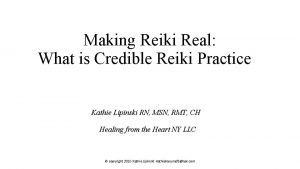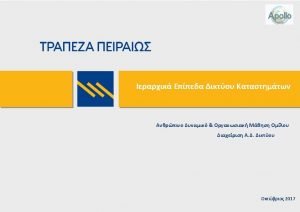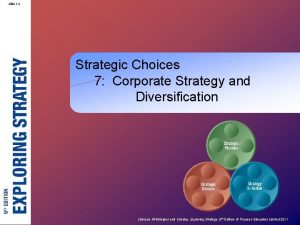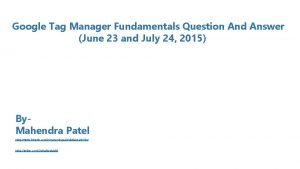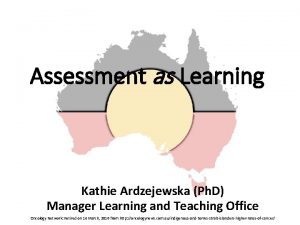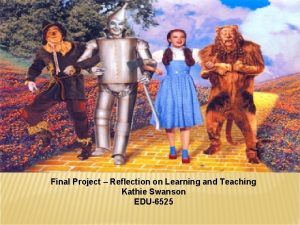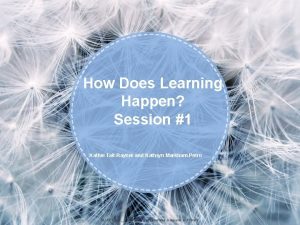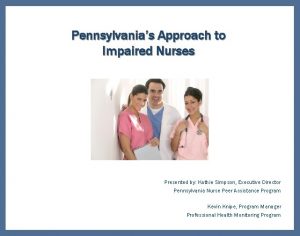Assessment as Learning Kathie Ardzejewska Ph D Manager








- Slides: 8

Assessment as Learning Kathie Ardzejewska (Ph. D) Manager Learning and Teaching Office Oncology Network: Retired on 14 March, 2016 from http: //oncologynews. com. au/indigenous-and-torres-strait-islanders-higher-rates-of-cancer/

Pre-service teachers The challenge & considerations • Meeting the Graduate Teacher Standards • Authentic • Often challenge to real world view • Lots of information • Not coming to tutorials prepared • Keeping them engaged when they want to go • Variation in tasks to prevent ‘cheating’ Retrieved from Reconciliation Australia on 14 March 2016 fromhttp: //www. australiaday. org. au/ australia-day/reconciliation/

The evidence from the literature constructivist assessment • Provide students with opportunities to evaluate work as strategic part of teaching design (Sadler, 2010) • Students developing explicit & tacit knowledge so they can recognise & judge quality & explain judgements • Assessment literacies (The Higher Education Academy, 2012) • A tool of inquiry; learning & assessment are intertwined (Ahn & Class, 2011) • Students generated exam in small-group collaboration

• Active participants in the construction of their knowledge • What the students said • This exercise equipped me to undertake the mid-term much more thoroughly, knowing the exam questions in advance became moot; I know the material so much more deeply through the exercise and with new perspectives

The Task and the Criteria • Design questions: • that demonstrate ability to apply the information • applying the SOLO taxonomy • that are structurally sound • Select an appropriate stimulus that demonstrates content knowledge & also assist students to activate their knowledge • Reflect on the purpose of the questions • Provide & seek feedback (in order to be eligible to pass) • Feedback is provided through the LMS

SOLO - Structure of Observed Learning Outcome (Biggs& Collis, 1982)

What the students said • The questions allowed me to synthesis (sic) the content & present the knowledge I obtained. The creative concept created a feeling of autonomy/freedom which made the reading enjoyable • Improve & enhanced my formatting of questions in future experiences • I found that it helped me grasp a better understanding of the content because I had to look at it in a different way to form questions

References • Ahn, R. , & Class, M. (2011). Student-Centered Pedagogy: coconstruction of knowledge through student-generated midterm exams, International Journal of Teaching and Learning in Higher Education, 23(2), 269 -281. • Biggs, J. B. & Collis, K. (1982). Evaluating the Quality of Learning: the SOLO taxonomy. New York: Academic Press. • Earl, L. (2003). Assessment as Learning: Using Classroom Assessment to Maximise Student Learning. Thousand Oaks: Corwin Press. • Sadler, D. R. (2010). ‘Beyond feedback: developing student capability in complex appraisal’, Assessment & Evaluation in Higher Education, 35(5), 535 -550. • Taras, M. (2010). ‘Using Assessment for Learning and Learning from Assessment’, Assessment & Evaluation in Higher Education, 27(6), 501510. • The Higher Education Academy. (2012). A marked improvement: Transforming assessment in higher education. York: Author.
 Kathie lipinski
Kathie lipinski Kathie coblentz
Kathie coblentz Senior manager vs general manager
Senior manager vs general manager Portfolio manager synergy manager parental developer
Portfolio manager synergy manager parental developer Cuadro comparativo de e-learning
Cuadro comparativo de e-learning Google tag manager fundamentals assessment 2 answers
Google tag manager fundamentals assessment 2 answers Documentation portfolio example
Documentation portfolio example Define dynamic assessment
Define dynamic assessment Portfolio assessment matches assessment to teaching
Portfolio assessment matches assessment to teaching
